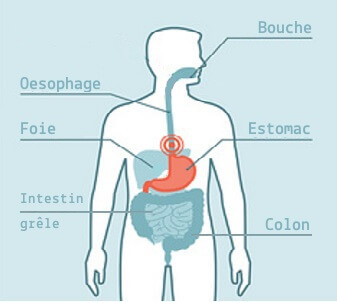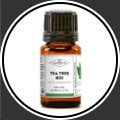
Difficult digestion problems? This is a very common problem! Constipation or diarrhea in some, bloating and gas in others, pain, stomach cramps or even nausea and vomiting: these are the symptoms that indicate that something has not been digested well, or that your digestive function is not working. GOOD.
In this article we will help you understand what exactly digestion is and why your diet can play a vital role in good digestion. We will explain to you what are the main causes of difficult digestion and we will give you tips as well as remedies based on essential oils and plants, very useful for treating and preventing these digestive problems. We will end with advice on how to eat better and therefore digest better!


Digestion and difficult transit: anti-constipation massage with essential oils
Why we love it: A powerful anti-constipation and antispasmodic, this blend of essential oils is also a psychological relaxant (very useful in cases of constipation and intestinal cramps due to stress) and a digestive facilitator.
Ingredients :
- Shelled marjoram essential oil 20 drops
- Tarragon essential oil 15 drops
- Cumin essential oil 10 drops
- Ginger essential oil 15 drops
- Sweet almond vegetable oil 10 ml
Preparation: Mix the essential oils and vegetable oil in a codigoutte bottle then shake to homogenize the preparation.
How to use it :
Massage the stomach with 5 to 7 drops of the synergy morning and evening if necessary. Use for 7 days maximum.Precaution: Never apply these pure essential oils to the skin: always dilute them in a vegetable oil as is the case here. Caution in people with asthma. Do not use in cases of hormone-dependent cancer or mastosis. Do not use in children under 12 years of age, pregnant and breastfeeding women. Do not expose yourself to the sun for 6 hours following application.

The most effective essential oils against severe digestion problems
Why we like it: Ultra effective and very digestive (after a meal that is too heavy, too fatty, too much water, etc.), this synergy is ideal for promoting faster and easier digestion! This blend of essential oils also fights pain, bloating and stomach cramps.
Ingredients :
- Peppermint essential oil 10 drops
- Cumin essential oil 20 drops
- Ginger essential oil 30 drops
- Exotic basil essential oil 20 drops
- Hazelnut vegetable oil 5 ml
Preparation: Mix the essential oils and vegetable oil in a codigoutte bottle then shake to homogenize the preparation.
How to use it :
Place 2 drops of this synergy on a small piece of bread crumbs or a neutral tablet. To be swallowed twice a day (after the two largest meals of the day) for a maximum of 5 days.Precaution: Caution in people with asthma. Do not use in cases of hormone-dependent cancer or mastosis. Do not use in children under 12 years of age, pregnant and breastfeeding women, the elderly, epileptics and hypertensives. No prolonged oral use without the advice of a healthcare professional.

Anti-bloating remedy with essential oils for good digestive comfort
Why we like it: This synergy of essential oils is ideal for combating bloating in the abdomen (stomach and intestines) and aerophagia. This mixture also helps with cramps and intestinal pain.
Ingredients :
- Cumin essential oil 1 drop
- Noble laurel essential oil 1 drop
- German chamomile essential oil 1 drop
Preparation: Place the 3 drops of essential oils directly on a neutral tablet or a small piece of breadcrumbs.
How to use it :
To be swallowed twice a day (after the two largest meals of the day) for a maximum of 5 days.Precaution: Do not use in cases of hormone-dependent cancer or mastosis. Do not use in children under 12 years of age, pregnant and breastfeeding women. No prolonged oral use without the advice of a healthcare professional.

Difficult digestion, nausea and nausea, the best essential oils to diffuse
Why we like it: Digestive and detoxifying, this blend of essential oils to diffuse will help you feel better in case of nausea or feeling sick.
Ingredients :
- Lemon essential oil 2 drops
- Sweet orange essential oil 3 drops
- Peppermint essential oil 1 drop
Preparation: Place the indicated quantities of essential oils in a diffuser or on a tissue for ease.
How to use it :
This synergy can be diffused for 30 minutes, 3 times a day (after each meal). For use outside your home, the quantities of essential oils indicated can also be placed on a tissue. Then breathe in the scent 2 or 3 times while taking deep breaths.Precaution: Caution in people with asthma. Not recommended if taking anticoagulants. Do not use in children under 12 years of age, pregnant and breastfeeding women, the elderly, epileptics and hypertensives.
Contraindications:
Essential oils are generally not recommended for pregnant women (during the entire pregnancy), breastfeeding women and children under 8 years old (12 years old for certain essential oils). Carefully read the contraindications for each essential oil.
These properties and methods of use do not constitute medical advice. For therapeutic use consult a doctor.

What is digestion?
Digestion is the entire process allowing the transformation (inside the digestive organs) of the foods we ingest into nutrients (smaller substances, directly assimilated by our body and useful for its proper functioning).
In foods (fruits, vegetables, meats, fish, dairy products, etc.), there are 2 types of substances:
- Assimilable nutrients, that is to say that after digestion they will be able to be absorbed by our body. We can cite for example energy nutrients (lipids or “fats”, carbohydrates or “sugars” and proteins or “proteins”), vitamins (A, B, C, D, E, K), minerals (sodium, potassium , iron, magnesium, zinc, etc.) and trace elements (present in very small quantities: copper, iodine, chromium, manganese, etc.).
- “Non-assimilable” substances such as dietary fiber (mainly coming from fruits and vegetables): these fibers are not absorbed by our intestine but are essential for the proper functioning of our intestinal transit.

The different organs of digestion
The digestive process: digestion takes place from the mouth to the colon and all the organs involved have a well-defined function.
- The mouth: it is in the mouth that food begins to be digested. Firstly, thanks to chewing which mechanically allows food to be cut into smaller, more easily digestible pieces. Saliva also plays an important role: it wets food and allows it to pass more easily into the esophagus. It also begins the digestion process with an enzyme called “amylase”.
- The esophagus: it has a fairly small role in digestion. It allows food to pass between the mouth and the stomach.
- The stomach: the stomach plays an important mechanical and enzymatic role in digestion. Contractions of the stomach (called “peristalsis”) help digest food into smaller pieces. In addition, the stomach releases many enzymes such as gastrin, pepsin or secretin which continue digestion. The stomach also secretes hydrochloric acid. This allows enzymes to function optimally. But be careful, excess production of this acid can sometimes cause heartburn.
- The duodenum: it is into the duodenum that secretions from the liver and pancreas flow. These secretions are essential and allow food to be digested into easily assimilated nutrients.
- The pancreas and the liver: during digestion, food does not pass through the liver or the pancreas, but they secrete substances promoting the digestion of food in the duodenum. The liver also plays a very important role, after digestion: it “sorts” the nutrients absorbed and only lets some of them pass into our body. This is called the first hepatic passage.
- The small intestine: is a major organ of digestion! It is in the small intestine that the absorption of food takes place. The numerous villi (folds of the intestinal wall) promote easy exchange and absorption of nutrients into our blood and organs. It is particularly in the small intestine that glucose (coming from the breakdown of sugars), amino acids (coming from the breakdown of proteins) and fatty acids (coming from the breakdown of fats) as well as salts are absorbed. minerals and vitamins.
- The colon: the main role of the colon is to absorb water. This process notably promotes the hardening of stools. So-called “non-assimilable” substances such as fiber are excreted in the stools without having been absorbed. Many bacteria also develop in the colon. This is what we call the “commensal” bacterial flora, also called the intestinal microbiota. These are “good bacteria” which play an important role for the proper functioning of our body in general. A change in this bacterial flora can cause certain digestive problems such as diarrhea (this is what happens, for example, when taking antibiotics).

Ginger essential oil (Zingiber officinale):
Properties: known mainly in aromatherapy and herbal medicine for its anti-nausea and anti-emetic properties, ginger however has other virtues. It is a good anti-inflammatory of the digestive mucosa, it promotes appetite and activates bowel movements. In this way, it helps to fight against constipation. It is used for many digestive disorders such as intestinal pain, lack of appetite, nausea or motion sickness, constipation and inflammatory bowel disorders.
Uses: one drop on a neutral tablet to take in the morning to treat nausea and slow digestion. Its smell can also be breathed directly from the bottle up to 4 times a day in case of travel sickness and regular nausea.
Precautions: dermocaustic, to be diluted in vegetable oil when used cutaneously.

Lemon essential oil (Citrus limon):
Properties: among its many properties, lemon essential oil is a tonic and a general stimulant. It is also a very good digestive, carminative (which stimulates intestinal secretions and increases the motility of the tract) and depurative (which eliminates toxins). It can also be anti-nausea like peppermint. In addition, it is antiseptic, antiviral and antibacterial. Finally, it reduces hydrolipid retention: it is diuretic (eliminates water) and releases fat. It is perfect after a hearty meal or to drain the liver.
Uses: a drop on sugar or in a spoonful of honey after a fatty meal, it will reduce stomach heaviness and help with liver drainage.
Precautions: much less restrictive than peppermint for oral use, it is on the other hand dermocaustic and phototoxic: no exposure to the sun after local use and do not apply pure to the skin (maximum concentration of 3% in dilution in a neutral oil). The concomitant use of anticoagulants and lemon essential oil is not recommended.

Peppermint essential oil (Mentha piperita):
Properties: ideal for all nausea, vomiting, poor digestion, reflux... It is also a good appetite suppressant! Detoxifying the body and stimulating the liver and pancreas, it is used in a number of liver-related disorders. General stimulant and invigorating in low doses, it is perfect for sluggishness, which is quite common when dieting.
Uses: It is quite difficult to use. If the usual precautions are taken, it turns out to be an exceptional essential oil. A single drop on a neutral tablet freshens the breath and suppresses hunger or helps digestion. For these indications, it goes wonderfully with lemon essential oil with which it acts in synergy.
Precautions: reserved for adults and children over 12 years old, it is also prohibited for pregnant and breastfeeding women regardless of the method of use. Orally, it is also prohibited for the elderly, hypertensive and epileptic people, who are at higher risk of laryngeal spasm and choking. Risk of hypothermia and “very cold” when applied to too large an area. In diffusion and through the skin, use very sparingly and diluted. Do not dilute in a bath. No prolonged oral use without the advice of a healthcare professional.

Essential oil of tarragon (Artemisia dracunculus):
Properties: tarragon essential oil is a powerful antispasmodic. It helps fight stomach aches and intestinal pain and can therefore also be used against menstrual pain. It stimulates the appetite and helps with slow digestion and aerophagia.
Uses: 2 drops diluted in 20 drops of apricot kernel vegetable oil to massage the stomach (against stomach pain and aches) and the lower abdomen (to combat menstrual pain) 2 times a day for 2-3 days maximum.
Precautions: Do not use in children under 8 years old, pregnant or breastfeeding women. Do not use in case of hormone-dependent cancer or mastosis. Dermocaustic, to be diluted in vegetable oil when used cutaneously. No prolonged oral use without the advice of a healthcare professional.

Exotic basil essential oil (Ocinum basilicum):
Properties: basil essential oil, like tarragon, is a powerful antispasmodic. It helps fight stomach aches, spasms and intestinal pain and can therefore also be used against menstrual pain.
Uses: it can be used like tarragon essential oil: 2 drops diluted in 20 drops of apricot kernel vegetable oil to massage the stomach (against stomach pain and aches) and the lower abdomen (for fight against menstrual pain) 2 times a day for 2-3 days maximum. It is recommended in cases of hormone-dependent disorders when tarragon essential oil is contraindicated.
Precautions: Do not use in children under 8 years of age, pregnant or breastfeeding women and people with epilepsy. Dermocaustic, to be diluted in vegetable oil when used cutaneously. No prolonged oral use without the advice of a healthcare professional.

Black pepper essential oil (Piper nigrum):
Properties: perfect digestive stimulant, it activates liver, pancreas and stomach. It is also a powerful diuretic. It is a good anti-inflammatory and anti-infectious and a powerful general warming and tonic. It is used for cravings and cravings: chocolate, alcohol, tobacco... It is recommended for many addictions but also for bulimia.
Uses: a drop of black pepper essential oil in a spoonful of olive oil (maximum 2 times a day) or on a neutral tablet or simply inhaling the bottle twice will help with cravings of all kinds.
Precautions: dermocaustic, it must be diluted in a vegetable oil before applying to the skin. Do not use in children under 12 years of age, pregnant or breastfeeding women. This essential oil is not recommended for angry or impulsive people, as it could promote overexcitement.

Cumin essential oil (Cuminum cyminum)
Properties: digestive, anti-inflammatory and painkiller, cumin essential oil also promotes appetite and helps expel intestinal gas (it is said to be “carminative”). It is very frequently used to treat digestive disorders, such as constipation, aerophagia and bloating, cramps and pain and inflammatory bowel problems.
Uses: used with caution, it can be taken orally as one drop on a neutral tablet in the morning (and evening if necessary) for 3-4 days maximum to help treat pain, constipation and intestinal problems.
Precautions: Do not use in children under 12 years of age, pregnant or breastfeeding women. Narcotic at high oral doses. Dermocaustic, to be diluted in vegetable oil when used cutaneously. Phototoxic, no exposure to the sun within 6 hours following application. No prolonged oral use without the advice of a healthcare professional.

Turmeric (Curcuma longa): anti-inflammatory and antimicrobial
The benefits: Known for centuries and used as a spice in many dishes, turmeric is a plant with countless virtues. It is both anti-inflammatory, antimicrobial and antioxidant. It is used in cases of irritable bowel, or gastric ulcer caused by Helicobacter pylori (bacteria present in the majority of gastric ulcers) or in any digestive pathology requiring an anti-inflammatory and antimicrobial effect. Also widely used to combat joint pain, rheumatism, osteoarthritis and tendinitis of all kinds, turmeric does not have the side effects of conventional anti-inflammatories (ache and heartburn) which makes it a preferred alternative to aspirin. and other ibuprofens.

Vegetable charcoal: absorbent, gases and toxins
The benefits: Vegetable charcoal is produced by carbonization then activation of coconut shells. These “burned” shells have a characteristic black color (that of coal). Their activation allows the creation of a multitude of microscopic holes within the carbon particle. These tiny holes allow toxins, gases and bacteria to be adsorbed. Please note, we are talking here about adsorption (= fixing and retaining toxins and other gases on the surface of the carbon particle) and not absorption (= process which allows the penetration of substances inside a body ).

Linseed oil (the most common flax): mild laxative
The benefits: Flaxseed oil comes in a bottle or in oil capsules to swallow. It is rich in omega 3 which makes it ideal for preventing cardiovascular diseases and maintaining the suppleness and beauty of the skin. The multiple fibers and mucilages it contains also allow it to fight against constipation. A mild laxative, flax is what we call a ballast laxative: the mucilages absorb water from the intestine and increase the volume of stools, thus promoting their elimination. They are not to be confused with so-called “contact” laxatives such as senna or cascara: these promote movements of the digestive tract and irritate the intestinal mucosa. They are very effective but should only be used for short periods otherwise there is a risk of addiction: you absolutely need a laxative to go to the toilet.

Artichoke (Cynara cardunculus var. scolymus): liver protector
The benefits: Exceptional digestive, the artichoke stimulates digestive secretions, and thus helps in cases of bloating and nausea. It helps fight constipation and slow digestion (of fats in particular). It also and especially acts on the liver. Choleretic, it stimulates the secretion of bile by the liver and therefore promotes digestion. It helps in the regeneration of liver cells and the elimination of toxins, which makes it useful in cases of mild liver failure. Finally, the artichoke reduces the level of circulating lipids and carbohydrates (sugars) and thus helps in cases of diabetes or hypercholesterolemia.

Ginger (Zingiber officinale): anti-nausea
The benefits: Widely used against nausea and motion sickness, ginger is also a good digestive in general. It is cholagogue (facilitates the elimination of bile) and choleretic, anti-inflammatory and hepatoprotective. It is also an excellent tonic and is commonly used as a physical and intellectual stimulant and as an aphrodisiac. Its main action remains the treatment of nausea and motion sickness, as well as the headaches that are often associated with them. Its remarkable effectiveness in this case and its safety of use make it an ideal food supplement for nausea in pregnant women. Please note, this use must however be supervised by a healthcare professional.

What causes difficult digestion?
One of the main causes of poor digestion is poor diet. To fully understand this phenomenon, we must understand what we eat:
Sugars (= carbohydrates), fats (= lipids) and proteins (= proteins) are 3 so-called “energy” foods, meaning that after digestion, they provide us with calories. When consumed in excess, they also make us gain weight. An excess of any one of these nutrients can create an imbalance leading to poor digestion.
- Sugars, for example, are processed by bacteria in our colon to produce intestinal gas and alcohol. This is called “fermentation”. Excess sugar in our diet therefore most often leads to bloating and aerophagia.
- Excess dietary fat will not be fully absorbed and excess lipids will be excreted in the stools. These will therefore be “greasy” and more liquid. Diarrhea may then occur.
These are just two examples among others showing the importance of a balanced diet for good digestion.
Other nutrients like fiber, found in many vegetables and fruits, are not digested by our bodies. However, their role is essential for good digestion and regular bowel movements. A diet too low in fiber can often cause many problems (including constipation).
Obviously, many other factors can cause difficult digestion:
- Gastric ulcer
- Crohn's disease or irritable bowel
- Stress, fears, anxieties: so many factors which act at different levels on the digestive system and can cause nausea, vomiting, intestinal pain, diarrhea, etc.
- Taking medications that act on transit directly or indirectly. Certain medications (anti-inflammatories, antibiotics for example) can cause constipation or promote diarrhea or induce heartburn. If you take medication regularly, talk to your doctor.
- Infection gastro intestinale
- Food poisoning

Difficult digestion, when to consult?
With a healthy lifestyle, without excessive eating, we resolve the problem in the majority of cases. However, gastrointestinal disorders should not be taken lightly and certain symptoms require a medical visit.
The following list is not exhaustive and any intense, bothersome, prolonged and repeated symptoms may require medical advice:
- Fever
- Blood in stool
- Difficulty swallowing
- Loss of weight and appetite
- Diffuse symptoms (nausea, diarrhea, vomiting) in children or young adults following systematic ingestion of the same type of food: this may be a sign of food intolerance or an allergy.
- Severe abdominal pain

Tips for eating better and therefore digesting better!
Eating healthily, easily assimilated foods, in small quantities and at appropriate times generally allows for better digestion. Poor digestion is often due to poor diet.- Listen to your body: if you're not hungry, don't eat. Without skipping a meal, if the plate you served yourself is too large, put it in a container and enjoy it the next day. Don't force yourself to finish everything if you are satisfied: it is by going beyond the feeling of fullness and forcing yourself to finish your plate that you can gain weight.
- Don't snack! The peak of insulin (hormone that lowers blood sugar) that occurs mid-afternoon makes you crave sugar. Then opt for a small sweet snack around 4 p.m.: a piece of dark chocolate, yogurt, a rusk with oilseed puree or a piece of fruit. This snack will allow you not to arrive home at 7 p.m., hungry: the meal is not ready, it is common to rush for chips and other aperitifs.
- Avoid too many starchy foods: good for your health, they are however difficult to digest. Indeed, the slow sugars contained in starchy foods are metabolized by the bacteria in our intestine (a process called fermentation) to produce... gas. These gases constitute what is frequently called “bloating”. If you are sensitive to bloating, also avoid excessive quantities of lentils, beans, excess dairy products, peas, soy, etc.
- “Don’t eat too sweet, too salty or too fatty”
- Generally favor each type of food at each meal: lipids (or “fats”), carbohydrates (or “sugars”) and proteins.
- Think about antioxidants: Colorful foods are often rich in antioxidants: kiwis, oranges, peppers, cabbage, carrots, pumpkins, squash, grapefruit, spinach, tomatoes, apricots, etc.
- ...and aromatic herbs! turmeric, cloves, rosemary, thyme, ginger... so many plants and benefits for your health.
- One dairy product per day: prefer soy, rice, sheep's or goat's milk or yogurt (organic is even better): less inflammatory than cow's milk.
- Prefer vegetable oils to butter: Olive, hazelnut, rapeseed, sunflower…
- Drink water ! : drink in small quantities and throughout the day; water or tea (preferably green, for its detoxifying action). Drinking water mechanically eliminates the toxins that are carried with it into the urine.
- And obviously, exercise: know that we first burn the sugar and then only after 30 minutes (1 hour) we burn the fat.
- Get some fresh air and sleep well: know that the hours before midnight count double from a metabolism point of view: it is therefore better to sleep well before midnight than to fall asleep from 2 a.m. to 10 a.m.
- Eat like a king in the morning, like a prince at noon, and like a pauper in the evening. The evening is the time when we can relax and eat with family: it is therefore also the time when we take the time to eat... and often, we eat a lot, even too much! It is important in the evening to eat light, especially if you eat late: lean meat or fish, vegetables, fiber. Prefer to eat fat and protein in the morning but without sugar. Eat protein with slow sugars at lunchtime. Eat protein and fiber in the evening. Vegetables and fruits as much as you want!
Bibliography
- Inserm.fr
- Pierre M, Gayet C My bible of herbalist secrets. Ed. Leduc. S 2016
- Pierre M The bible of healing plants. Ed. Du Chêne 2017
- The little Larousse of healing plants: 500 plants and their remedies. Ed. Larousse 2013
- Lacoste S My bible of herbal medicine. Leduc S 2014
- Lousse D, Macé N, Saint Béat A, Tardif A The family guide to medicinal plants. Ed. Mango Paris 2017
- Larousse of medicinal plants. Ed Larousse 2017
- Baudoux D Practical aromatherapy notebooks according to the French school Vol. 1 Pediatrics, Vol. 2 dermatology and Vol. 5 pregnancy. Collection: Aromatherapy professionally. 2011 edition
- Baudoux D and Breda ML Chemotyped essential oils. Scientific aromatherapy. Ed. JOM 2015
- Baudoux D Practical guide to family and scientific aromatherapy. My 12 favorite essential oils in 100 very effective formulas for 300 diseases. Ed JOM 2014
- Baudoux D Practical guide to aromatherapy Diffusion. My 32 favorite essential oils in 62 formulas to diffuse and breathe. Ed JOM 2013
- Festy D My illustrated primer on essential oils. Ed. Leduc.s 2015
- Faucon M. Treatise on scientific and medical aromatherapy: essential oils. Foundations and help with prescribing. Ed. Blood of the Earth 2017
- Lefief A The complete guide to essential oils: treating yourself with aromatherapy. Ed. ESI 2017
- Festy D My essential oils bible: special 10 year edition. Ed Leduc S 2017
- Baudoux D For intelligent cosmetics, essential and vegetable oils. Amyris 2010
- Zahalka JP Complete dictionary of aromatherapy. Ed. Dauphin 2017
- Baudoux D AROMATHERAPIE. Ed. Dunod 2017
- VIDAL Recos: recommendations and practice 3rd edition. Ed. VIDAL 2009
- The MERCK MANUAL 5th Edition. Ed of Medicine 2014
- PNNS: National Health Nutrition Program
NOTE: This article was written by a pharmacist. The data summarized there come from the scientific literature and the references cited above. For medical advice, in the event of specific or prolonged symptoms, please consult your doctor. Only he will be able to make a precise diagnosis and, if necessary, provide you with the most appropriate treatment.
 OUR
OUR